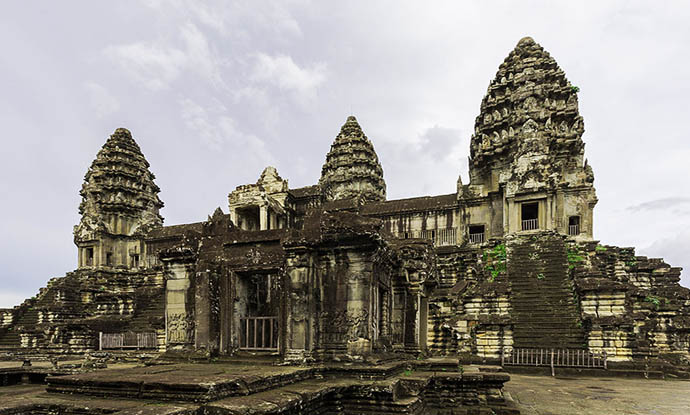
The American and British paleoclimatologists found out that the Khmer empire – the feudal state in the territory of modern Cambodia – was sharply weakened and finally disappeared thanks to series of long floods and the droughts which replaced them at 14-15 a century of our era, it is told in article published in the Proceedings of the National Academy of Sciences magazine. The Khmer empire was formed approximately in the 9th century of our era in the territory of Cambodia and adjacent by it the states – Vietnam, Thailand and Laos. It reached blossoming in the 12th century and existed to the middle of the 15th century. The important place in life of the country was taken by agriculture and the related system of channels which allowed ancient Khmers to keep surplus of water during monsoons and to use them as required. The group of scientists under the leadership of Mary Dai (Mary Day) from the Cambridge university (Great Britain) assumed that decline of the Khmer kingdom can be connected with continuous alternation of excessively droughty and rainy seasons in the region at 14-15 centuries. On it specifies specific drawing of annual growth rings in trunks of the trees growing in the territory of Vietnam during falling of the empire. For check of a hypothesis Dai and her colleagues “read” history of work of system of water supply of a kingdom on deposits of silt and other sedimentary breeds in the tank East Baray – the central reservoir of Angkor, the capital of the Khmer empire. As scientists note, this artificial reservoir was stretched on eight kilometers in length and two kilometers width and contained in itself about 53 million cubic meters of water. The mouth of a reservoir was connected through difficult system of channels to the bed of the river Siyemreap which of waters he gathered up to two thirds of the general capacity during a rainy season. Paleoclimatologists studied a two-meter layer of deposits from southwest part of a reservoir and tracked how the chemical composition and speed of formation of deposits during existence of the Khmer empire were changed. By calculations of researchers, each new season brought about 1,2 millimeters of deposits on a reservoir bottom in the first three centuries after its design. In the 13th century the indicator increased to 6 millimeters a year: most likely, the period of long and rather regular floods began at this time. Then the average speed of accumulation of silt decreased to 0,4 millimeters during the period from 1310 to 1590 of a new era. This period coincides with time of decline of the empire. Besides, at a turn of 13 and 14 centuries the chemical composition of deposits considerably changed – sedimentary breeds of the early periods contained a small amount of organic carbon whereas deposits are rather rich 15-16 centuries with the remains of plants and seaweed. In deposits of the soil from 1320 to 1625 of our era three sites especially rich with organic chemistry put. Scientists connect them with episodes of a long drought what the high share of sand which peak of growth is the share of the first third of the 15th century speaks about. Other chemical indicators – a ratio of aluminum, potassium and isotopes of strontium – confirm accession of a drought during this era. Thus, long droughts 14-15 centuries and the previous floods of the 13th century directly affected a condition of East Baraya and system of channels. As scientists consider, it demonstrates that the Khmer engineers and the government of the empire could not adapt the existing system of channels for new conditions. It also served as the reason of decline and disappearance of the largest state of Southeast Asia of times of the Middle Ages.



Leave a Reply